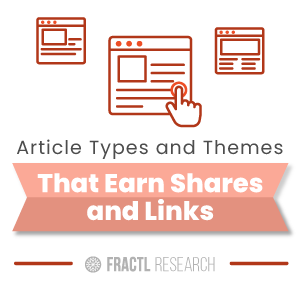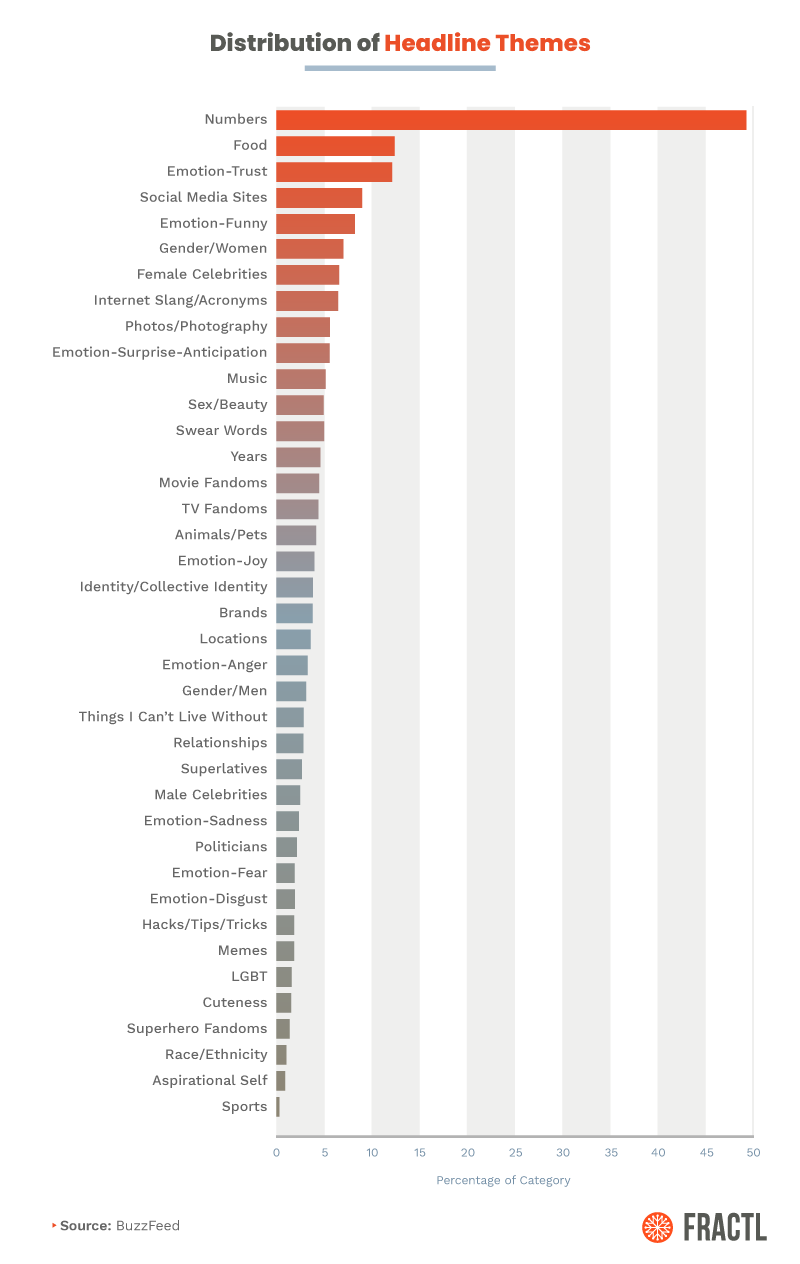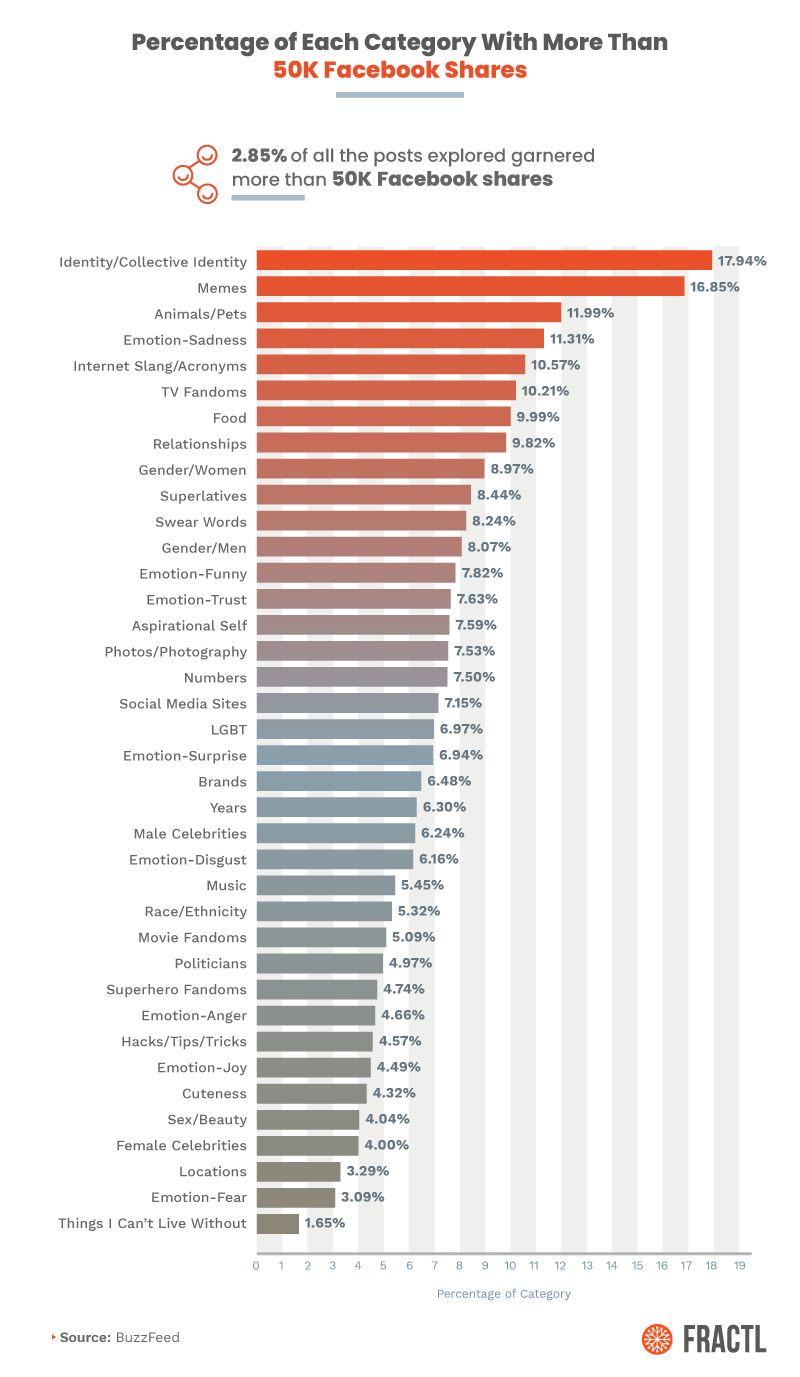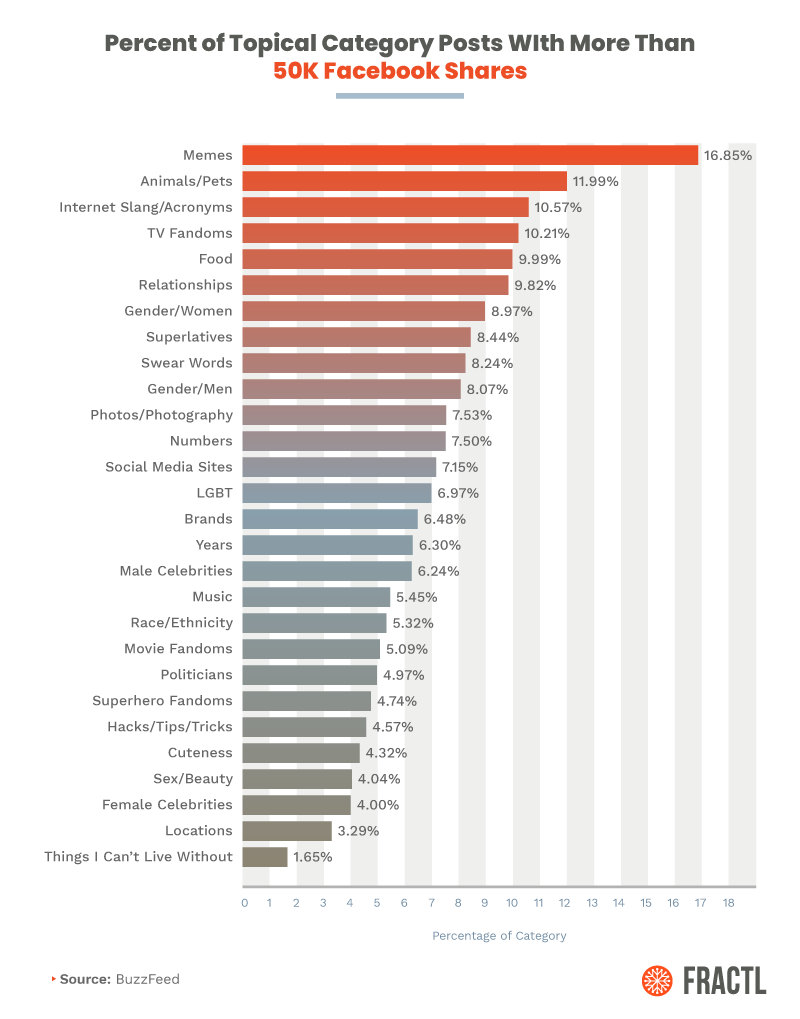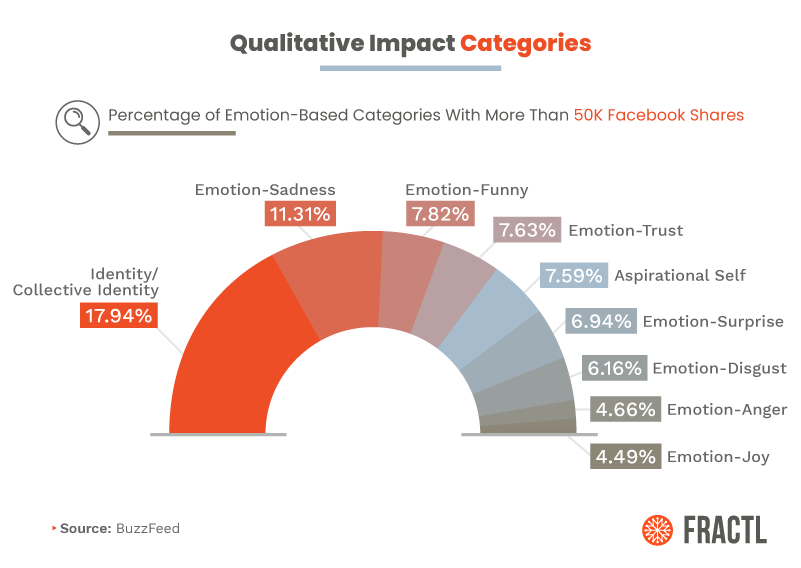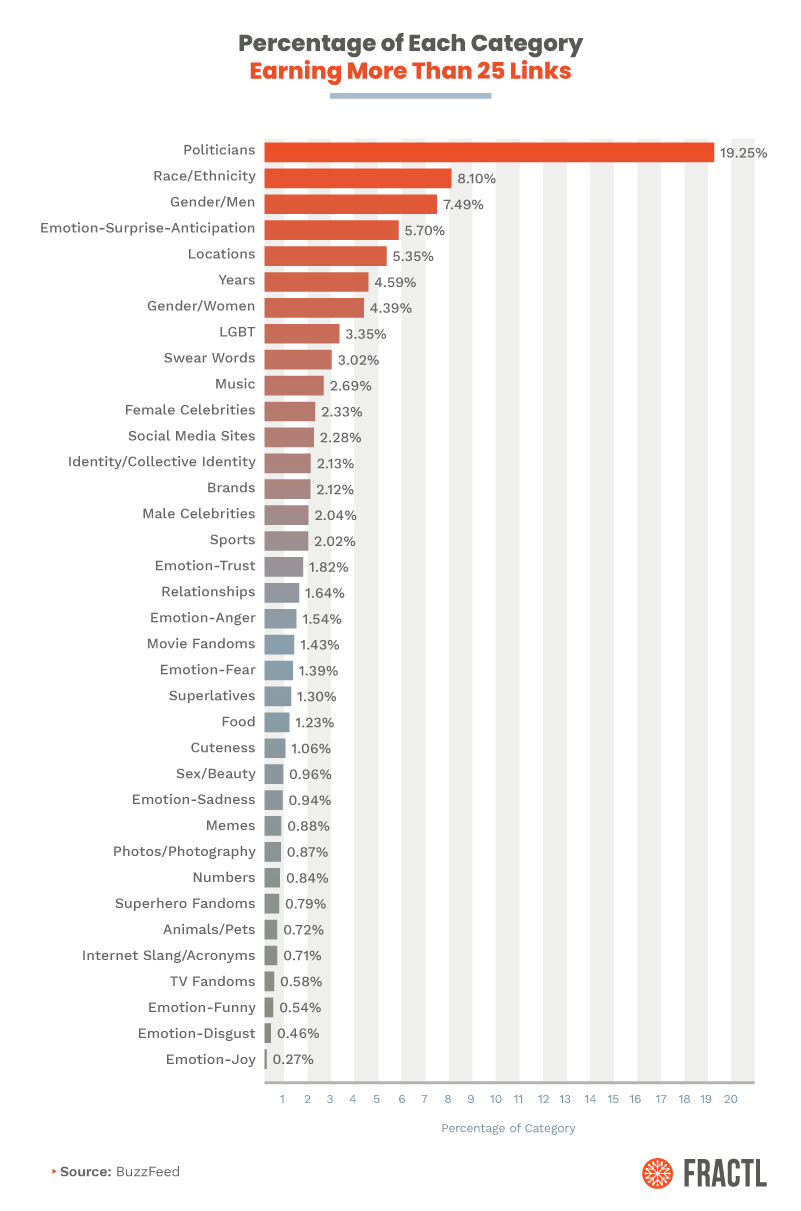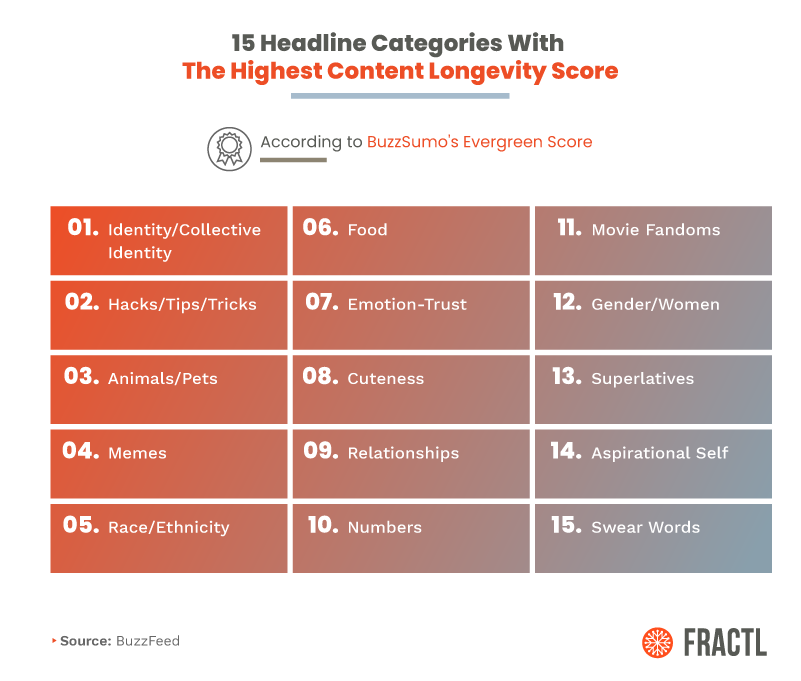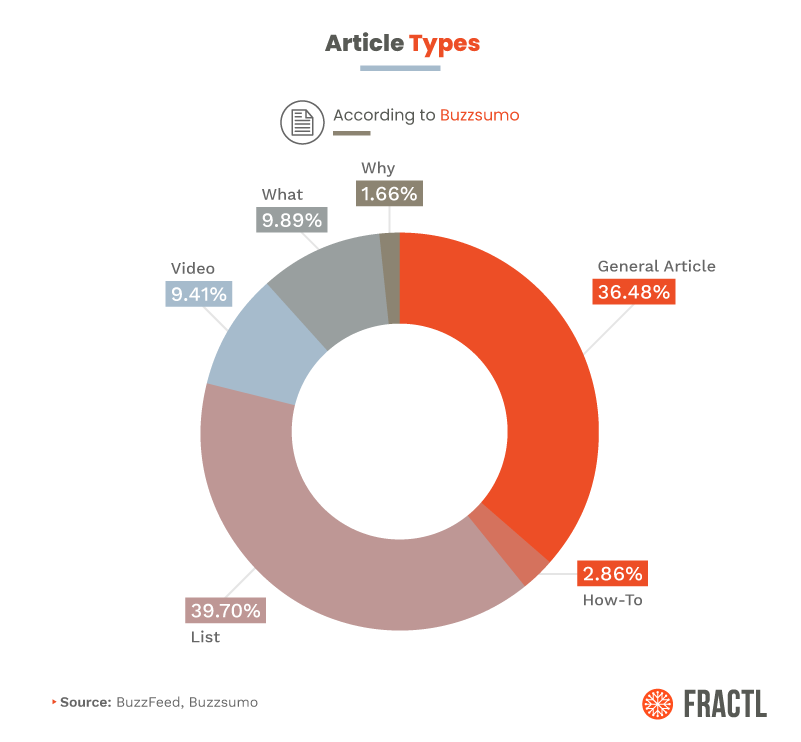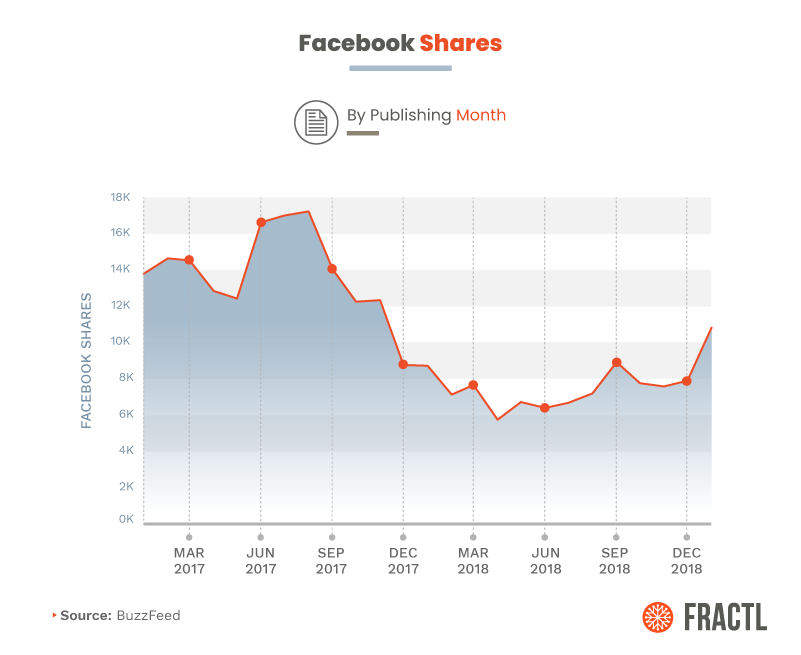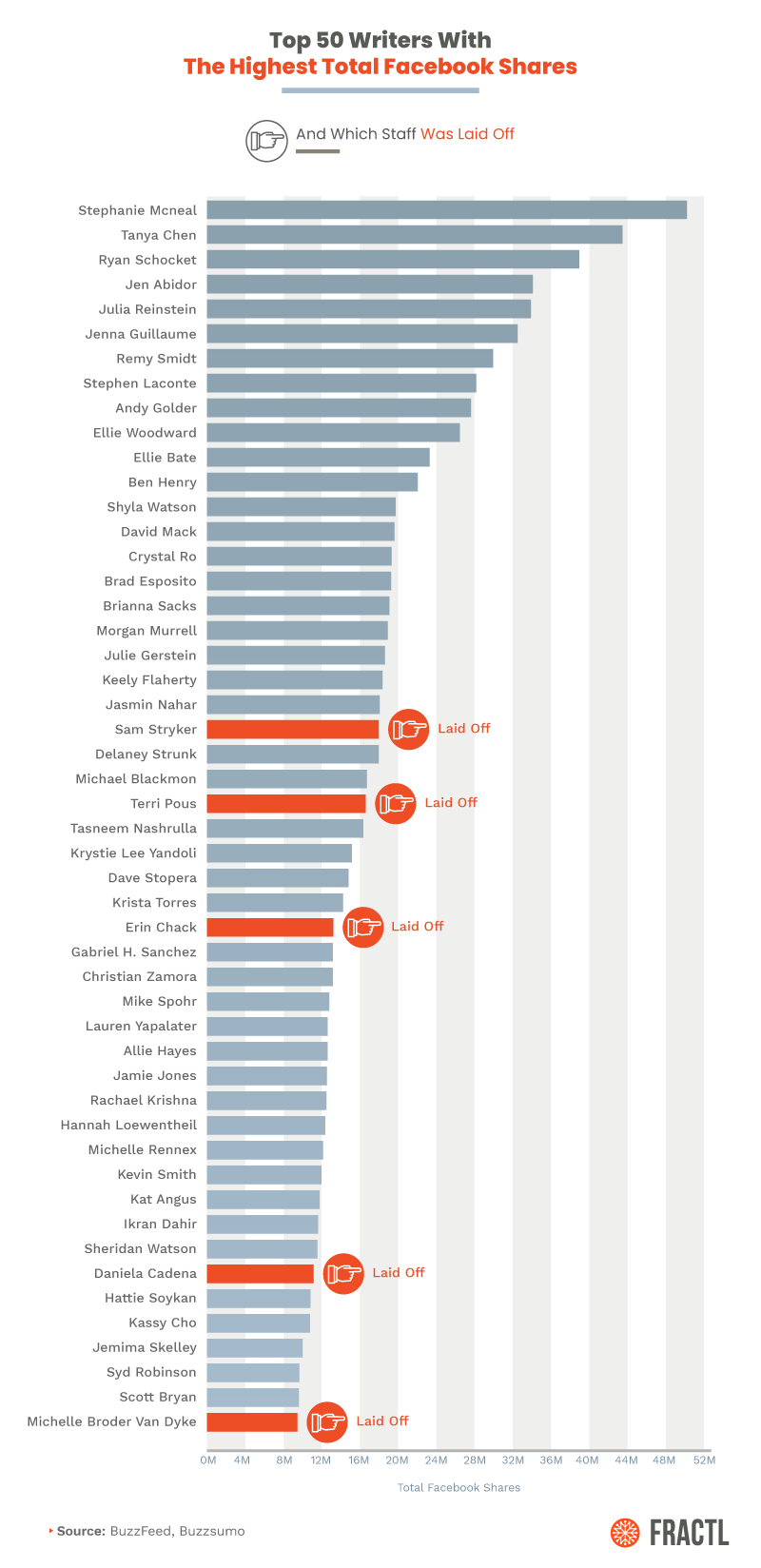One of the most important parts of crafting a piece of content—whether it’s an article, a campaign, an image, a story, or a video—is the title. What will you call your latest creation? How will you convey your major themes, ideas, and points in less than 20 (or so) words?
Finding a compelling and succinct way to represent your piece is harder than someone might imagine. The process goes beyond summarizing your ideas. You must step inside the shoes of your target audience and determine the best way to present a title that they will be intrigued and click through to your entire article.
With this in mind, we sought to analyze the diversity of headlines that exist, especially within large media companies that pump out thousands of pieces of content per year. We looked to Buzzfeed, a leader in the digital media world, to find answers into how their headlines are a reflection of the current trends or vice versa: how, as a major player in the industry, their headlines affect trends.
We examined 15,000 articles that Buzzfeed published and compiled data based on their headlines. Our full methodology can be found at the bottom of this page.
Read through our findings below.
Breakdowns of Categories
To perform this analysis, we looked at two major categorical groups to organize the headline types: a Topical Grouping, and Qualitative Impact grouping. They are broken down below:
1. Topical Groupings – categories related to a person, place, thing, idea
- Numbers
- Food
- Social Media
- Years
- Locations
- Women and Women’s Issues
- Politicians
- Movie Fandoms
- Consumerism and Products
- Female Celebrities
- Sex and Beauty
- Music
- Men and Men’s Issues
- TV Fandoms
- Animals/Pets
- Title Includes Internet Slang/Jargon
- Title Includes Swear Words
- Title Includes Superlative Words
- Photos/Photography
- Brands
- Hacks/Tips/Tricks
- LGBT
- Male Celebrities
- Relationships
- Superhero Fandoms
- Memes
- Cuteness
- Race/Ethnicity
- Sports
2. Qualitative Impact – categories related to how the article intends to make you feel or respond.
- Articles that convey the emotion of trust or authoritativeness
- Articles that convey the emotion of surprise or anticipation
- Articles that convey the emotion of anger
- Articles that convey humor or are meant to be funny
- Articles that convey the emotion of joy/happiness
- Articles that create a sense of collective identity
- Articles that convey the emotion of fear
- Articles that convey the emotion of disgust
- Articles that convey the emotion of sadness
- Articles that relate to the aspirational self
These were the top groupings across all categories:
Headlines that contain numbers tend to be the most popular choice by the Buzzfeed staff by a long shot – it’s not even close. This may allude to the rising trend of “listicles” or “top X lists” in the media; explaining a topic in an organized list increases the readability of the page and offers a familiar structure for readers.
Overall Top Performers
To earn over 50,000 social shares on a single piece of content is something to celebrate; to earn more than 50,000 shares on Facebook alone is a massive achievement. As a major player in the publishing sphere, Buzzfeed is no stranger to successful content. Virality can become more likely if a publisher has name recognition and a history of releasing noteworthy content to the masses. Headlines related to identity and internet culture were more likely overall to earn over 50,000 Facebook shares.
When we break down this data and take a deeper look at the two categorical groups—the Topical Grouping and the Qualitative Impact grouping, we can glean even more insights.
Topical Grouping Category
Again, headlines that relate to internet culture do very well for Buzzfeed—memes, internet slang, and internet-related acronyms all tend to perform and earn many social shares. Headlines that related Animals, TV Fandoms, Food, and Relationships also performed better than average.
Qualitative Impact Grouping
When turning to the Qualitative Impact category, we see the high showing of posts that refer to a personal or collective identity that appeared before on the aggregate chart. Looking deeper at the type of emotions that are most often represented by Buzzfeed content, we can see that sadness, humor, and trust are the second, third, and four categories, respectively, that were more likely to have a post earn over 50,000 social shares.
Besides social shares, there are many other important metrics to consider when looking at the success of any given piece of content. Link building is a primary focus of many marketers, and we will look at how well these posts earned links next.
Best Categories for Link Building
The headlines that proved to be the highest link earners were not as likely to perform well on social media, demonstrating the importance of offering a range of content aimed to perform well when matched against different key performance indicators, or KPIs.
Headlines that referenced politicians, race or ethnicity, and issues related to men were more likely to earn links than any other categories.
Content Focused on Longevity
The marketing tool Buzzsumo scores content based on an “evergreen score,” which identifies content that is able to maintain high engagement in the time after initial publishing. Stories that score high on this scale have a high propensity to be relevant after a month from the date of publishing. We compared the evergreen score of the 15,000 headlines we analyzed and we found that stories related to identity and hacks/tips fared well in the time after publishing.
Buzzfeed’s Article Types, by Popularity
As we mentioned before, list-type articles have taken over, becoming an incredibly popular means of content sharing. Buzzfeed focuses most of their content creation efforts on list-type articles and general articles. Sharing information is becoming easier and easier, allowing for more simplistic forms of articles to become relevant.
How is Buzzfeed Performing on Facebook?
Since 2006, Buzzfeed has sought out to track down and share viral content in an appealing way. Like many media companies like it, they have experienced their ups and downs.
Over the year of 2017, the company saw a sharp decline in the number of people sharing its content. Even with a pronounced uptick toward the end of 2018 after a more stable year, these results may have implications on their future.
Buzzfeed Layoffs and Their Impact
The 2019 media industry layoffs have resulted in thousands of workers becoming displaced. These firings affected newsrooms and companies around the world, and Buzzfeed was not exempt from these losses. In fact, Buzzfeed employees remain some of those who took the hardest hit.
Below shows the list of the top 50 Buzzfeed writers who had earned the most shares on their articles, noting the writers who were part of the layoffs.
Although some of the highest performing writers in the company were involved in the layoffs, their successes in media may not have been the major deciding factor in who stayed and who was let go.
Head over to our Marketing Research page to read through more of our marketing research and findings!
Methodology
Using Buzzsumo, we pulled the top 15,000 article titles, social sharing data, evergreen score, link scores, and article authors. We then used the titles as the basis for text analysis using Wordstat. The category taxonomy created was done by Kristin Tynski and the choices of categorization were subjective and manual. Because of this, there are some inherent limitations built into this project and categorization may not be fully comprehensive nor 100% accurate. That said, the taxonomy category creation and time spent on placing article titles into the categories was extensive and represents our best efforts at comprehensiveness. Many article titles exist within multiple categories.
